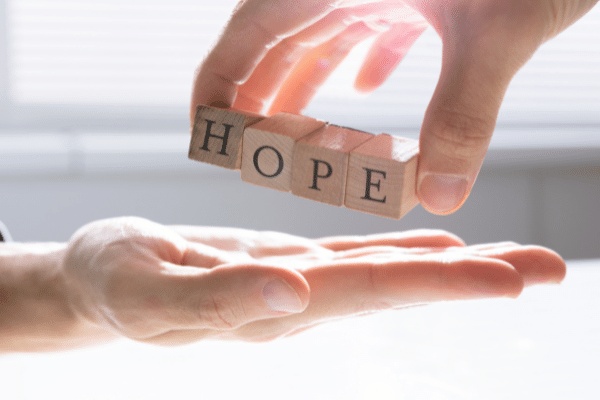Serving Gives Hope

Serving is powerful. It is transformative and its impact can be surprisingly wonderful. An Inasmuch event of a good number of years ago verifies this. Leaders targeted a neighborhood where there was a high crime rate, rampant drug use and poverty. When the residents were asked if volunteers could make repairs to their homes, many of which were in various states of disrepair, some of them declined. The city and county had made lots of promises over the years to improve the neighborhood and defaulted on everyone, so the residents were skeptical. However, enough agreed that an Inasmuch United was planned for that neighborhood. The Baptists worked on one house while the Presbyterians worked on another a few doors down the street and the Methodists worked on another around the corner and the Catholics took on a different project on the next street, and so forth and so on. In all about two dozen home repair projects were conducted that day. The residents were ecstatic.
The following Saturday volunteers from the local community college came to that neighborhood to teach people how to read and write as illiteracy was high there. THIS time four times as many people came to the literacy training as had ever shown up before. The community college folk said the only way they could account for such a big increase in people wanting to learn to read and write is that the churches were there serving them the week before. I am convinced those people were given hope when people came to serve them at their point of need with no strings attached, and with that new hope they had renewed interest in helping themselves.
Pain is Inevitable—Suffering is Optional.
Pain is part of life. It is unavoidable. And when a person endures pain long enough with no relief in sight, hope can be a corresponding casualty. A natural question by a person in need is whether anyone knows or cares about her situation. It is one thing to be in pain; it is something else to be in pain and no one cares. That’s pain on pain which is what suffering is. Pain need not lead to suffering. If a caring person steps in to meet a person’s need, even if it is not possible to alleviate the need altogether, the need may not lead to suffering.
Hopelessness is the darkest place a person can be emotionally. Hopelessness is the absence of hope. Someone has said, “Take from a man his wealth, and you hinder him; take from him his purpose, and you slow him down. But take from man his hope, and you stop him. He can go on without wealth, and even without purpose, for a while. But he will not go on without hope.”
The Power of Hope
Psychologist Dale Archer has worked with people who suffer great loss and who have good reasons to wonder if life will go on for them. “I had the privilege of working with victims of both Hurricanes Katrina and Rita. I quickly found that there were two types of physical survivors: psychological victims and psychological survivors. I realized that the mindset had nothing to do with money, education, how much was lost, or how many loved ones died.” The difference between the victim and survivor mindsets was hope. The victims were all consumed by their loss, refusing to help themselves. The survivors grieved, but they persevered and fought. Archer adds, “Hope is often the only thing between man and the abyss. As long as a patient, individual or victim has hope, they can recover from anything and everything.”
Serving Dispenses Hope
Hope is a stowaway that travels with serving. It may not be conceived or even imagined, but it’s there working in concert with caring doing its therapeutic part. And here is the good part—the work of hope lasts longer and offers to produce additional positive results. When we serve people in need, we give them help and hope. Help is relief for the immediate need—food for the hungry, shelter for the homeless, an embrace for the lonely. But hope goes beyond the immediate need to the future. Help inspires us to do what we can to help ourselves.
One of many places where Inasmuch has been the mechanism by which hope was dispensed to people who needed it was High Point, North Carolina. The city of High Point has used the Inasmuch model of community ministry to improve several neighborhoods in recent years. The mayor of High Point, Chris Williams, describes the pleasing outcomes of these events. He cites one example of the positive impact of serving people in need in one neighborhood. One of the residents had no running water for several months. His kitchen was unusable. He cooked his meals on a grill outside regardless of the weather. He was unable to make the repairs necessary to make his home more livable. When a team of volunteers came and repaired his kitchen making it workable again, he said, “You gave me my life back.” That’s an expression of hope. That man got more than a working kitchen. He received a renewed vision of his future because people cared enough to help him. Serving does that.
Your Thoughts?
I’d love to hear from you about any instances in which you have seen people in need given hope, especially if that hope led to those being served doing things to help themselves as a result.
For Pastors
What is your congregation doing in your community to dispense hope in those pockets of despair most people know about? Are there ways to give help and hope to some of the people in your community who have suffered because of the pandemic?



Great article on the power and productivity of hope.
Thanks, Nathan. I appreciate your faithful readership.